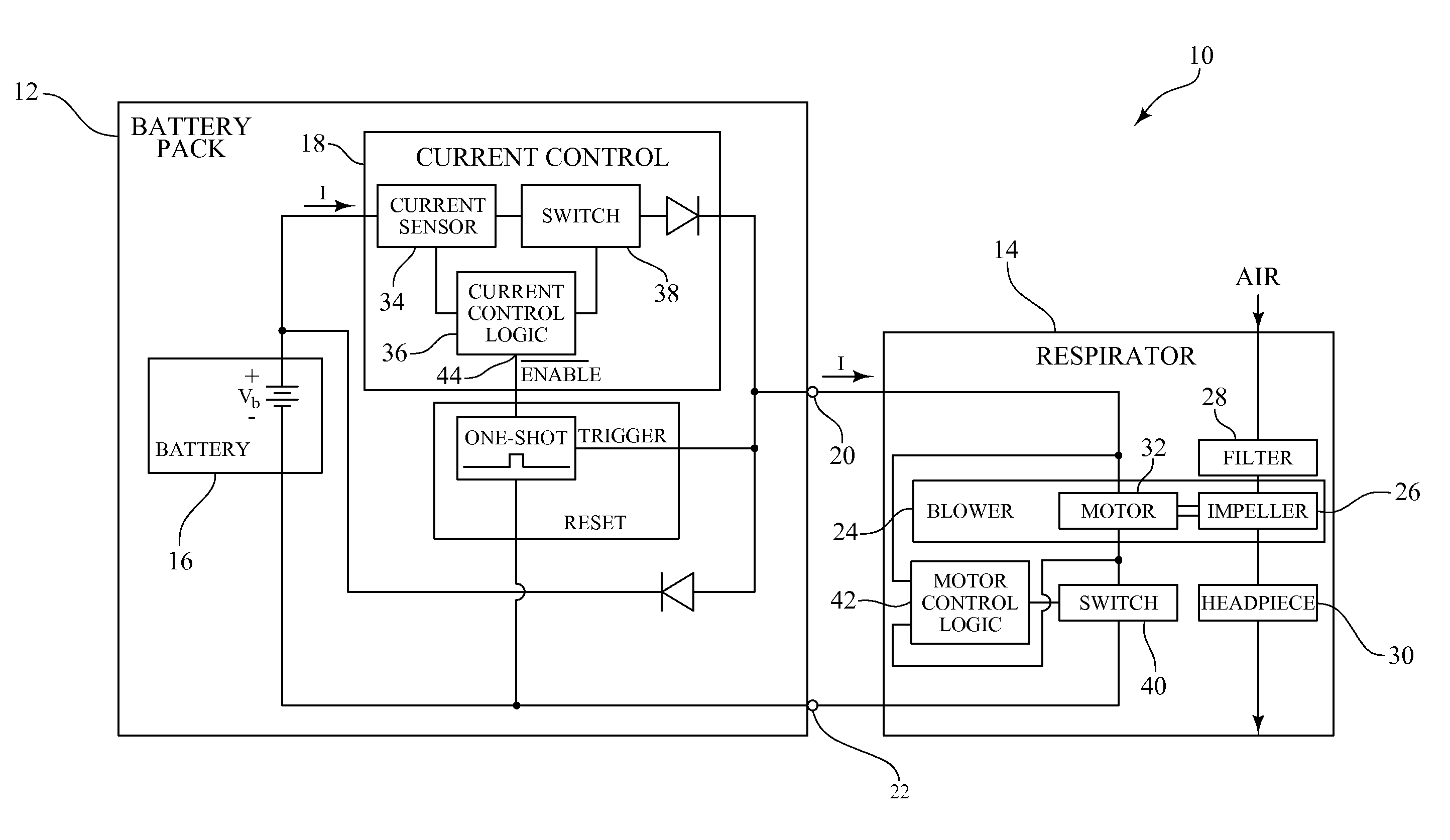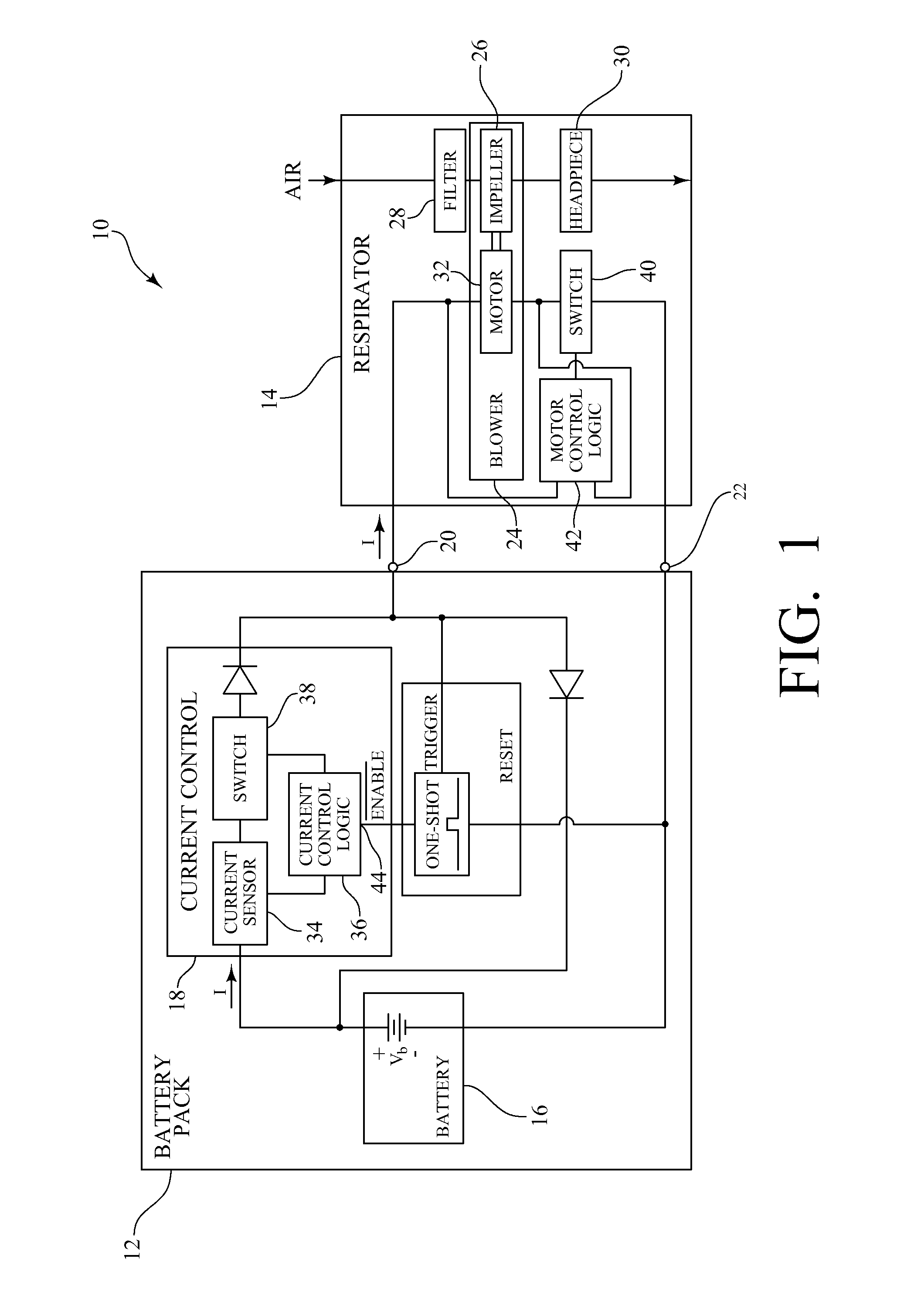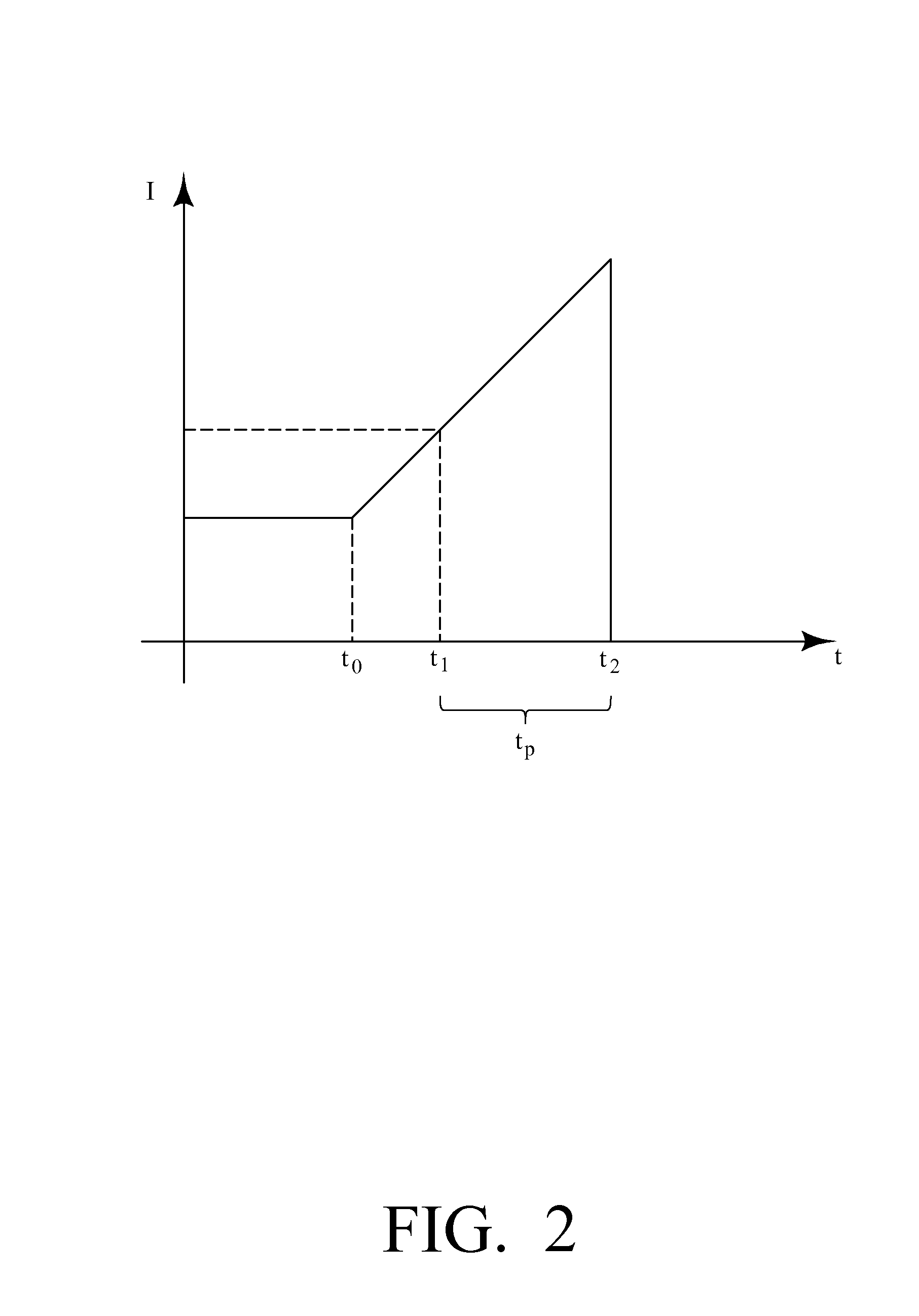Powered air-purifying respirator system
a respirator and air purification technology, applied in the direction of respirators, valve operating means/release devices, instruments, etc., can solve the problems of increasing the physical size of resistors needed to limit the power flow, reducing the speed of the motor and volume, and creating an explosive atmosphere of dust and gases. , to achieve the effect of high current/power level and high current level
- Summary
- Abstract
- Description
- Claims
- Application Information
AI Technical Summary
Benefits of technology
Problems solved by technology
Method used
Image
Examples
Embodiment Construction
[0022]As shown in FIG. 1, an exemplary powered air-purifying respirator system 10 includes a battery pack 12 and a respirator unit 14. The battery pack 12 has a battery 16, a current control means 18, a positive battery pack terminal 20 and a negative battery pack terminal 22. The respirator unit 14 has a blower 24. The blower 24 includes an impeller 26 for pulling air through a filter 28 and pushing the filtered air to a headpiece 30, and a motor 32 in electrical communication with the battery 16 for driving the impeller 26. The current control means 18 is for sensing the current flow, I, from the battery 16 to the motor 32 and stopping the current flow when it exceeds a threshold value, Ithresh, for a predetermined amount of time, tp. One of skill in the art will recognize that the current flow is directly proportional to power flow in this DC circuit, since it is assumed that the voltage of the battery is substantially constant. Thus, the current flow, I, has a corresponding powe...
PUM
 Login to View More
Login to View More Abstract
Description
Claims
Application Information
 Login to View More
Login to View More - R&D
- Intellectual Property
- Life Sciences
- Materials
- Tech Scout
- Unparalleled Data Quality
- Higher Quality Content
- 60% Fewer Hallucinations
Browse by: Latest US Patents, China's latest patents, Technical Efficacy Thesaurus, Application Domain, Technology Topic, Popular Technical Reports.
© 2025 PatSnap. All rights reserved.Legal|Privacy policy|Modern Slavery Act Transparency Statement|Sitemap|About US| Contact US: help@patsnap.com



